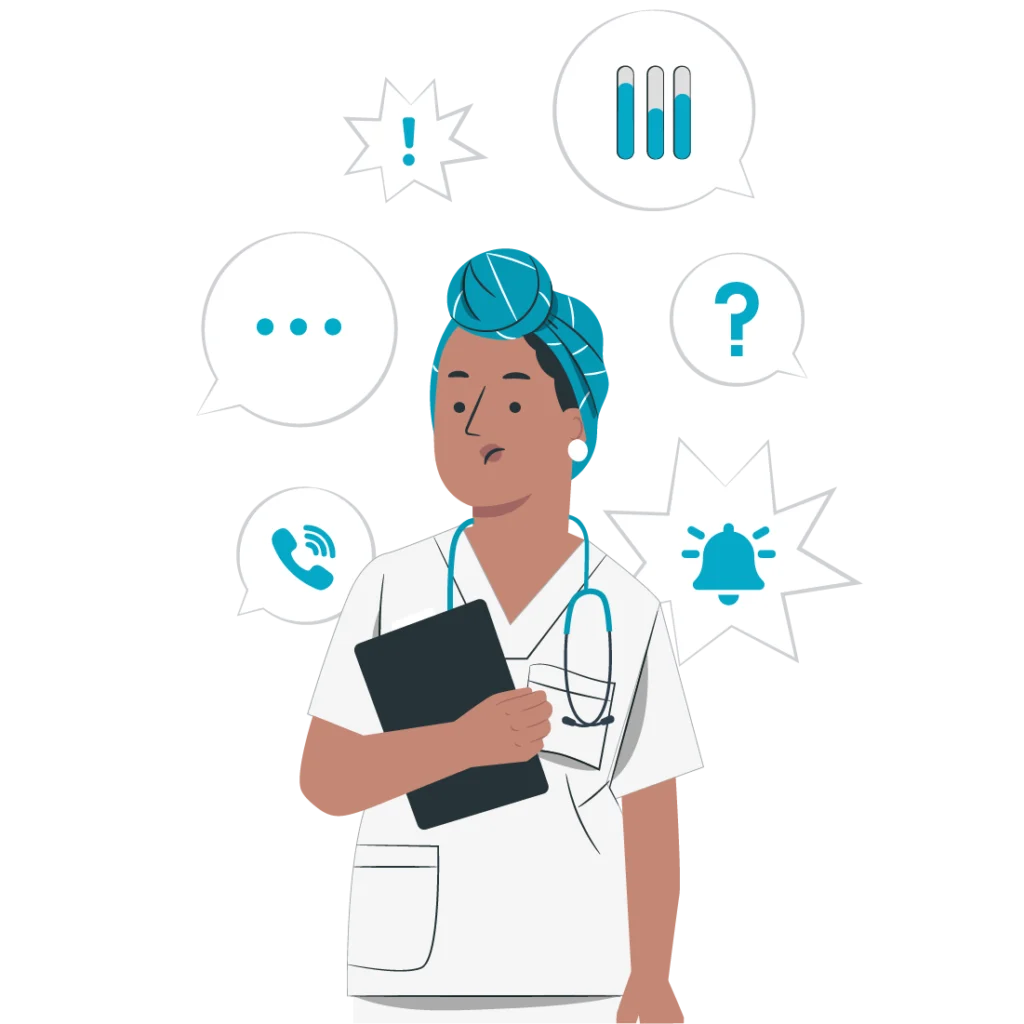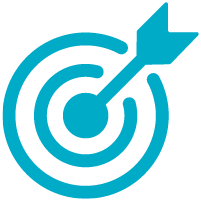Live Event
Real solutions from experts who've moved the needle on burnout
Register NowTABLE OF CONTENTS
Percentage of physicians who said that having no control over their workload was a contributor to burnout, according to a 2024 KLAS Research report.
Nearly half of healthcare workers reported feeling burned out in 2022, up from 32% in 2018.
Burnout is estimated to cost the healthcare system more than $4 billion annually, largely due to turnover and work-hour reductions among primary care physicians.
The National Bureau of Economic Research says burned-out clinicians are less productive. Organizations can experience an $81,000 decrease in revenue for every burnedout physician.
According to the AMA, burnout among US physicians has improved since 2021, but they still remain at a notably higher risk for burnout compared to other US workers.
As many as 1 in 5 healthcare workers encounter physical abuse, and verbal abuse is even more common.
Respondents to an AMA survey cited the shortage of nurses and medical assistants, excessive administrative burden, and lack of support staff as major contributors to job stress.
Every specialty comes with its own pressures, but some stressors are universal:
The US may face a shortage of up to 86,000 physicians by 2036, with primary care hardest hit. These shortages create:

38% of new physicians prioritize worklife balance when choosing their first job. Though burnout levels have dropped post-pandemic, the AMA suggests that “physician practices and health systems might be able to ameliorate burnout—and hence, its damaging effects—by giving physicians more control over their jobs and workdays.” This is influenced by a study co-authored by the AMA and Mayo Clinic, which found burnout was reported by 75% of health professionals who lacked control over their workload and schedules, compared to just 39% among those who felt they had good control—a difference of 36 percentage points.
What do all these numbers mean? Without schedule autonomy, clinicians face an uphill battle:
As Dr. Ted Epperly put it in the New England Journal of Medicine:
Autonomy extends beyond scheduling. In a digital-first environment, clinicians are constantly bombarded by messages. They want some control over how and when they’re contacted—not just when they work.
Unstructured communication fuels burnout. Honoring communication preferences protects focus, supports work-life balance, and reduces alarm fatigue.
Still, autonomy must be balanced with safeguards that ensure urgent messages always break through.

Beyond lacking autonomy, many clinicians are frustrated with how schedules are built— often inflexible, opaque, and packed with nights, weekends, and too little time off. It’s easy to see how these frustrations contribute to increased burnout levels:

Outdated scheduling methods are perhaps the biggest contributor to unfair schedules.
Balancing patient needs, organizational goals, and provider preferences is complex. One small change can create a domino effect that unravels the entire schedule. Expecting humans to manage this without help is unrealistic and unsustainable.
Building schedules by hand or with rudimentary tools almost guarantees mistakes, coverage gaps, and uneven shift distribution. These issues don’t just frustrate clinicians—they directly impact patient care and operations:
A 2018 time and motion study revealed that nurses spend over a third of their time each day managing communication. And because clinical communication is the backbone of care delivery, convoluted or inefficient communication wastes time and increases stress levels across the care team.
Outdated communication and scheduling technology contribute heavily here. Possible issues include:
Lost, delayed, or unanswered messages
When communication becomes a barrier to care delivery, clinicians may even experience moral distress if they’re unable to give patients the attention and quality of care they deserve.
With the shift to value-based care under the Affordable Care Act, clinicians face growing documentation demands, leaving less time for patients and more time behind a screen. Physicians now spend an average of 2.6 hours per week complying with external quality measures, and two hours on administrative work for every hour of face-to-face care.
EHRs often compound this burden. Many are unintuitive, slow, and disconnected from real clinical workflows.
Together, documentation overload and poor EHR design can extinguish the human element of care. Clinicians feel more like data entry clerks than healers. What starts as a spark of frustration quickly ignites, leaving only the embers of what once was a calling to heal.
Shouldn’t patient care mean more than clicking boxes?
Some physicians spend over half of a 12-hour shift documenting.
of physician burnout is connected to EHR-related stress.
Clinician burnout often shows up through a combination of emotional, physical, and behavioral symptoms tied to work. Common signs include:

of US residents reported burnout in 2024—a drop from previous years, but still over one-third of trainees

of US nurses say they feel burned out most days, based on a 2025 survey of more than 12,000 respondents

of medical students experience burnout, per a 2022 global metaanalysis covering nearly 27,000 students

Now you know why burnout is so prevalent and how to recognize some of the most important signs. But how do you diagnose where burnout is coming from in your organization?
Use this diagnostic guide to pinpoint where burnout is happening and what’s contributing to it. Remember to stop the FLAME before it spreads!

Foster Open Dialogue: Burnout is human—not a weakness. To identify it, organizations must first break the silence. Create a culture where discussing stress is safe, supported, and stigma-free. When clinicians feel empowered to speak up, meaningful change becomes possible.
Listen to Understand: Go beyond surface-level complaints. Pinpoint the root causes of stress and burnout by gathering feedback, analyzing workloads, and examining contributors that may not be obvious at first.
Here are a few questions to ask:
Audit Burnout Hotspots: After listening in detail to your team, look closely at the workflows, policies, and pressures that are quietly wearing your team down. If you need to, expand your understanding with surveys, interviews, and observational feedback to uncover where burnout is most likely coming from and gather data to support your findings.
Map the Pressure Points: Patterns matter. Once you’ve gathered feedback, connect the dots to see where the strain is concentrated.
Are specific roles, shifts, or departments consistently stretched too thin? Mapping these pressure points helps prioritize the areas that need attention first.
Explore What Could Change: What solutions are available to soften or even eliminate the identified pressure points? Before simply replacing solutions and workflows, what technology could be updated or integrated to mitigate stressors that contribute to burnout? Can existing processes be simplified?
Collaborate on possible remedies, whether it’s staffing changes or peer support groups and wellness initiatives. If and when better tech systems are found, discuss key governance and change management needs before making any decisions.
One important note: make sure all key stakeholders have a seat at the table to offer their opinion.
Once you’ve put out the FLAMEs, you can begin making incremental changes to chip away at the underlying problems. Be sure to track key indicators like turnover, satisfaction, and engagement to monitor long-term improvements.
For too long, clinicians have long been expected to solve burnout on their own through yoga, meditation, and mindfulness strategies. While these more personal tools do have some intrinsic value, systemic change is the only way to meaningfully address burnout across your organization.
Here’s how to start.
Denial and stigma only worsen the problem. Organizations must create a culture where clinicians feel safe acknowledging burnout without fear of judgment. Get started by:

Outdated tools and workflows are daily stressors. Modern clinical technology can lighten the load, reduce friction, and improve efficiency—without requiring more time or logins.
1.
Scheduling
Think about this: There are rest regulations for pilots and truck drivers, but not clinicians. Shouldn’t their schedules support their well-being too?
If you’re still manually scheduling in Excel, it’s time to upgrade to an automated scheduling platform that can:
2.
Clinical Communication
If care team messages are the cars, the schedule is the road (or map) that allows the messages to get to the right provider at the right time.
Together, scheduling and communication systems work in tandem to improve collaboration and patient care coordination. Modern clinical communication software can:

EHRs are powerful, but they’ve become synonymous with excessive documentation. Some vendors push their platforms for every function, creating an all-consuming—and often overwhelming—interface.
Author and physician Dr. Devan Moodley says EHRs are “cluttered with information [due to lack of] customization,” and struggle to meet diverse user needs because “a single system is used to cater [to] a variety of different users within a healthcare setting.”
Simplifying documentation is a shared responsibility—EHR vendors, health systems, and policymakers all need to act to bring about meaningful change. Meanwhile, clinicians should keep advocating for meaningful targeted workflow improvements within their organizations and the industry at large.
While EHR improvements are ongoing, organizations can immediately reduce clinician burden by streamlining workflows with fewer—but smarter—tools. Simplifying logins, cutting redundant steps, and consolidating vendors saves time, money, and hassle.
Key integrations include:
The best tools are flexible, user-friendly, and built to evolve. A thoughtful, integrated tech stack frees clinicians to spend less time clicking and more time caring.
Nurses are the backbone of care coordination, whether it’s working with families, physicians, specialists, or support staff. But their attention is constantly pulled away from patients by inefficient workflows.
A 2018 study found that in a 4-hour window, nurses spent just 32 minutes with patients and 51 minutes coordinating care. That’s more than a third of their time lost to communication tasks. Ironically, technology aimed at improving nurse workflows has often contributed to this frustration by adding siloed, task-specific “solutions” to their workload.
The result? Burnout and turnover.
To retain nurses, we need to reduce busywork and give them tools that actually help. A few examples could be:
A 2023 meta-analysis found a 15% turnover rate among North American nurses.
Since 2022, over 138,000 nurses have left the workforce, with nearly 40% more planning to exit by 2029.
Violence and harassment in healthcare are far too common—and not discussed nearly enough.
A 2023 CDC report found that 13% of healthcare workers reported being harassed at work in 2022, more than double the rate from 2018. If you’re being harassed at work, you’re much more likely to experience stress, helplessness, and burnout.
The CDC recommends several steps to prevent violence and harassment in healthcare settings:
A 2023 meta-analysis found a 15% turnover rate among North American nurses.
Technology can also be your best friend. Imagine a nurse sensing escalating behavior during a patient interaction. With the right communication platform, she could discreetly trigger an alert, instantly notifying security and key team members.
These silent, rapid-alert systems already exist in some facilities and are a powerful way to support safety, confidence, and peace of mind for clinical staff.
No matter the size of your organization or team, fostering an environment that prioritizes wellness can improve clinician morale as a whole. If you’ve already worked to reduce stigma (Step 1), you’re on the right path.
The AMA notes that “feeling valued is a striking mitigator of burnout.”7 When leaders actively listen and respond to staff needs, clinicians feel seen, supported, and respected.
It’s crucial to follow through and offer:
Fortunately, it’s increasingly common for medical schools, residency programs, and other clinical settings to offer wellness support. Get started here.
Clinician burnout isn’t about a lack of resilience—it’s a reflection of unsustainable workloads, outdated technology, and other systemic challenges. It affects every role, from medical students to seasoned providers.
The good news? Burnout is not unavoidable.
Change doesn’t happen overnight, but every improvement moves your team toward a healthier, more sustainable future. Clinicians shouldn’t have to choose between their calling and their well-being. With the right strategies, we can build a healthcare system where both thrive.